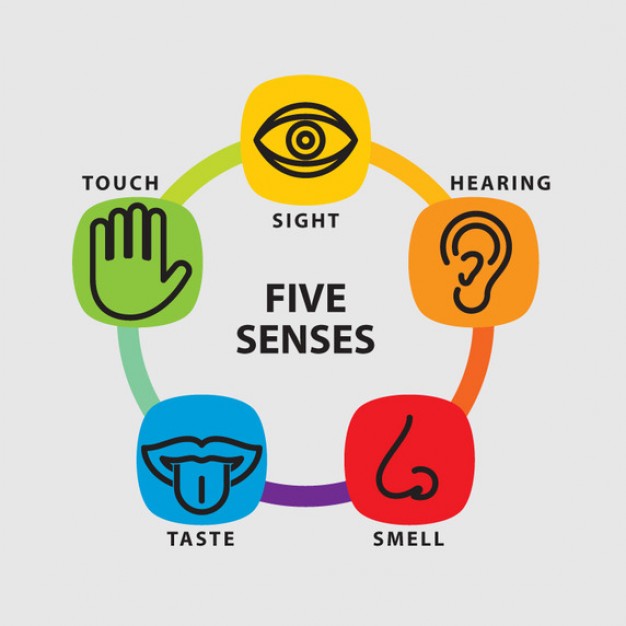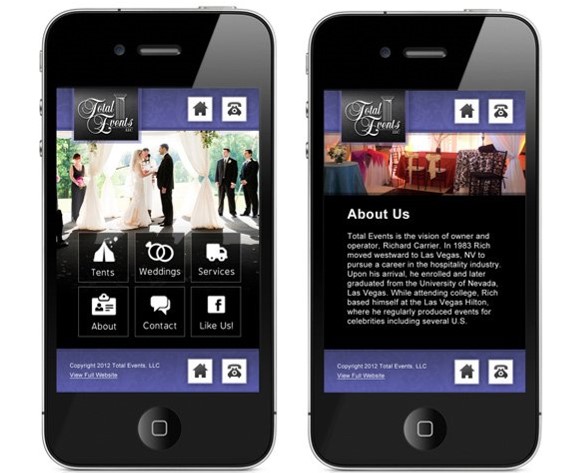If you are reading this blog post I probably don’t have to introduce you to the belief that Clubhouse, new audio, social network and culture phenomenon will be big. May or may not you be Clubhous-er yourself, you still going to be affected by (what some might call the 3rd wave of) audio fascination. How exactly that is possible is what I would like to walk you through in next lines.
Many do attribute the sudden spike in Clubhouse (CBH) userbase to COVID pandemic situation. To be fair, lock-downs (and alikes) certainly do play into cards of virtual, over distance chat app. But to largely dispel this simplifying argument, let me point out that Clubhouse emerged in March 2020 and it took 3 waves of COVID (until Jan 2021) for CBH to gain the traction. What is more, Facebook released in Q2 2020 the CatchUp App (in many aspects mimicking the CBH functionalities) and silently hushed it under table after few months of, ehm, no real interest. Thus, for those betting on Clubhouse will be dead with civilization walking out of the pandemic, I would suggest to rethink the fundaments.
What exactly is the CBH’s value added?
I don’t want to bother you with CBH Newbie course on what functions this audio social network does (or does not) offer, as there are comprehensive sources along this line. However, for debating what will happen to neighboring services, we should understand what extras CBH bring to the table:
- Democratizes Audio podcast creation. You may argue that there has been already a plethora of tools to kick-start your audio podcast host career. But none of them has been as simple as bare unmute button in your CBH app. Yes, with Clubhouse your threshold to generate mass audio content is down to smartphone ownership.
- Summon the legend. You can certainly assemble your prominent guest into podcast studio, but only if you are close enough not to make the travel-in-travel-out time investment not ridiculous compared to actual interview air time. With CBH you can have as little as minute or ten of VIP without her/him making single step out of their apartment. What is more, VIP’s participation can be summoned from the up, by single + sign and the other side has option to politely turn the invite down. That cuts speaker arrangement to literally seconds.
- Enables instant room in crowded place. One of the less evident, but striking features of CBH is fact that you can call townhall meeting on any topic any point of time. Sure, before COVID you could have taken amplifier and start shouting on the square. The difference is that CBH emulates the same thing, but with the “square” being 24/7 crowded by people. Let me illustrate this with my very own experience: I took part in room hosting panel debate. As the panel came to its end, I opened instant room with title “How did you like this debate” and within 5 min had 2/3 of the original debate headcount in my room exchanging thoughts on how panelist actually did. (just to put that into context my CBH followership has been back then 1/100 of most of the panel debate speakers)
- Immediate, short life content. Some might consider this detriment while others genius of CBH, but all the audio content generated here is expected to die with room being closed. Yes, there is the recording option heatedly debated, but the original DNA of Clubhouse seems to be rather instant gratification. With podcasts you can pause or reload later. If you see your star talking on CBH you better rush to hear what (s)he has to share. Or you might regret it. And that is magnetic dimension of the CBH content.
- Authority is earned, not given. As literally anybody can be CBH host, over the time, the CB authority will be earned. You can be villager with internet signal barely enough to run CBH and challenge the best journalist Pro in interview skills. Sure, only if you can. But what if you can for real?
There has been millions of articles and blog posts celebrating (or downplaying) the essence of CBH and I do not intend to queue for your attention on this. However, I have been personally lacking is a bit more strategic, forward-looking thoughts on who will benefit, suffer (or down right die) from CBH entry to the scene. As much as there surely might be some wild implications (that I do not dare to speculate about), I think a fair analysis of what impact on services neighboring with CBH would not hurt. Let me, therefore, take one-by-one into spotlight and assess how much of the opportunity or threat CBH might account for.
CBH vs. PODCASTS
 If I was asked to describe CBH without using words audio and social media, I would probably wrap my explanation into Podcasts. That is because, from all the thigs of the World, audio podcasts are (both in form and benefit for end-user) probably as close to CBH as you can get. One might think of CBH being actually “just extension of podcasts” (which I would deem mistake). So what exactly is CBH likely to summon on its nearest podcast sibling?
If I was asked to describe CBH without using words audio and social media, I would probably wrap my explanation into Podcasts. That is because, from all the thigs of the World, audio podcasts are (both in form and benefit for end-user) probably as close to CBH as you can get. One might think of CBH being actually “just extension of podcasts” (which I would deem mistake). So what exactly is CBH likely to summon on its nearest podcast sibling?
As much as they are similar, the main difference between CBH and Podcasts is that they are on-demand. Meaning, you can choose time when you listen to podcast, you can rewind it or re-listen if you didi no catch some notion fully. That is supreme to CBH in which all is gone in a second and you can only listen to it when it happens. On the other side, CBH tops podcast on interactivity.
EXPECTED CBH IMPACT: Podcasts will be negatively hit in short term (as people devote more time to CBH leading to cut in podcast consumption). But in mid-term they recover mostly, leading to split and specialization of hosts towards either more interactive (CBH) or more structured and condensed (Podcasts) gigs. And there surely will be a lot of hybrid formats in between (like recording CBH rooms for podcast format or podcast hosts experiment with more interactive rooms)
CBH vs. MEETUP
 If you look for exemplary victim of the CBH rising, then Meetup platform is the one. The simple reason for this bold statement is that CBH is something like superset of Meetup functions (whose mission is mainly to bring to attention of sizable (and likeminded) crowd to event happening). And offering this as-a-service to B2B customers mainly. Well, CBH can do all that Meetup was doing and it can actually host the very event itself. And its all for free (at least for now). Meetup’s outlook got already doomy with pandemic cutting the option of meetups take physically place. In respond to this, Meetup took the only logic step to motion towards virtual events. And .. BANG! That was the trap drop of CBH. I would be shocked if Meetup ever recovers from this.
If you look for exemplary victim of the CBH rising, then Meetup platform is the one. The simple reason for this bold statement is that CBH is something like superset of Meetup functions (whose mission is mainly to bring to attention of sizable (and likeminded) crowd to event happening). And offering this as-a-service to B2B customers mainly. Well, CBH can do all that Meetup was doing and it can actually host the very event itself. And its all for free (at least for now). Meetup’s outlook got already doomy with pandemic cutting the option of meetups take physically place. In respond to this, Meetup took the only logic step to motion towards virtual events. And .. BANG! That was the trap drop of CBH. I would be shocked if Meetup ever recovers from this.
EXPECTED CBH IMPACT: Killed by CBH
CBH vs. FACEBOOK
 When assessing the face-off with giants of social media, it is a bit of the moving target shot. Facebook has proven already early Feb 2021 that it does not intend to sit and wait for CBH to eat into its kingdom (and profits attached to it). So commenting on clash of these two forces is bit more like chess match commentary. However, Zuckerberg indicated that CBH is deemed to be serious foe and will face all the competitive treatment from Facebook. From my point of view, CBH can only claim the “bored so scrolling through FB feed” part of Facebook screen-time. Networking, direct messaging, sharing video and pictures, that all is missing in CBH. On the other hand, until CBH gets Android resolved, Facebook can effectively counter-strike with own audio-chat platform carving enough breathing room for itself in audio social media space. EXPECTED CBH IMPACT: Only minor decrease in Facebook activity.
When assessing the face-off with giants of social media, it is a bit of the moving target shot. Facebook has proven already early Feb 2021 that it does not intend to sit and wait for CBH to eat into its kingdom (and profits attached to it). So commenting on clash of these two forces is bit more like chess match commentary. However, Zuckerberg indicated that CBH is deemed to be serious foe and will face all the competitive treatment from Facebook. From my point of view, CBH can only claim the “bored so scrolling through FB feed” part of Facebook screen-time. Networking, direct messaging, sharing video and pictures, that all is missing in CBH. On the other hand, until CBH gets Android resolved, Facebook can effectively counter-strike with own audio-chat platform carving enough breathing room for itself in audio social media space. EXPECTED CBH IMPACT: Only minor decrease in Facebook activity.
CBH vs. Radio
 Assessment of traditional radios’ hopes is looks a bit more difficult on first sight. But if you strip out layers of historical sentiments, picture resembles the CBH vs. Meetup stand-off in sense of CBH can offer everything that FM radio has to offer. Not surprisingly, there are already 24/7 airing radio formats on CBH running. Therefore, the fight with CBH boils down to 2 factors: A] the coverage of Internet signal vs Radio signal ; and B] IT literacy of the radio audience. Thus, yes, in some geo areas Radio will maintain monopoly and also true that senior listeners are less likely to appear on CBH platform. But you can smell this holds true only to certain time. Because on both dimensions the development is running against the traditional radio odds. EXPECTED CBH IMPACT: Gradual but severe decline.
Assessment of traditional radios’ hopes is looks a bit more difficult on first sight. But if you strip out layers of historical sentiments, picture resembles the CBH vs. Meetup stand-off in sense of CBH can offer everything that FM radio has to offer. Not surprisingly, there are already 24/7 airing radio formats on CBH running. Therefore, the fight with CBH boils down to 2 factors: A] the coverage of Internet signal vs Radio signal ; and B] IT literacy of the radio audience. Thus, yes, in some geo areas Radio will maintain monopoly and also true that senior listeners are less likely to appear on CBH platform. But you can smell this holds true only to certain time. Because on both dimensions the development is running against the traditional radio odds. EXPECTED CBH IMPACT: Gradual but severe decline.
CBH vs. TRADITIONAL CONFERENCING
 Conference (tourism) is yet another industry with nothing-to-envy fate. Completely trashed by 2020 pandemic, on its needs and now facing serious threat or replacement by ap like CBH. Without too much further due, let me comment that traditional (and virtual) conferencing is facing “Embrace Change or Bleed Out” dilemma. For those seeing opportunity in CBH (after all you spare all the rooms rent and equipment rental and people even eat they own food along), they might revive on/with CBH. But for majority of the others, this is probably pretty bleak game-over. EXPECTED CBH IMPACT: Devastating damage.
Conference (tourism) is yet another industry with nothing-to-envy fate. Completely trashed by 2020 pandemic, on its needs and now facing serious threat or replacement by ap like CBH. Without too much further due, let me comment that traditional (and virtual) conferencing is facing “Embrace Change or Bleed Out” dilemma. For those seeing opportunity in CBH (after all you spare all the rooms rent and equipment rental and people even eat they own food along), they might revive on/with CBH. But for majority of the others, this is probably pretty bleak game-over. EXPECTED CBH IMPACT: Devastating damage.
CBH vs. YOUTUBE (and other video streaming)
 The most complex (and thus most difficult to evaluate) is the relationship of CBH to video streaming services. Upon shallow consideration, CBH should not dare to think of hitting Youtube. After all, Youtube videos have all the audio content + video (and its monetization) on top of it. Also many YouTubers have vast influencer power which they don’t easily let go. I have to credit Miroslav Petrek for interesting twist to thinking about Youtube vs. CBH match. He pointed out that much of the Youtubers’ content is actually mere audio with some background theme. Thus, yes, the sexy faces or figures of Youtube host might not have chance to shine on CBH room, but does it really matter that much? And does the fact that I can talk in person to my star (that I would only have to passively listen to) outweigh this shortcoming?
The most complex (and thus most difficult to evaluate) is the relationship of CBH to video streaming services. Upon shallow consideration, CBH should not dare to think of hitting Youtube. After all, Youtube videos have all the audio content + video (and its monetization) on top of it. Also many YouTubers have vast influencer power which they don’t easily let go. I have to credit Miroslav Petrek for interesting twist to thinking about Youtube vs. CBH match. He pointed out that much of the Youtubers’ content is actually mere audio with some background theme. Thus, yes, the sexy faces or figures of Youtube host might not have chance to shine on CBH room, but does it really matter that much? And does the fact that I can talk in person to my star (that I would only have to passively listen to) outweigh this shortcoming?
EXPECTED CBH IMPACT: Some damage will be done, as the influencer sound-including content monopoly of YouTube {and its cousins) will split among audio-only and audio+video. And there will be also rise of Clubhouse-influencers damming a bit Youtube’s role in this area.
CBH vs. LinkedIn
 LinkedIn as predominantly the professional social network stands a bit aside from the main battlefield of CBH entry. Also the use-cases and value added of networks like LinkedIN (or German speaking Xing) has little overlap with CBH features. Therefore, we can assume CBH will have no means to challenge LinkedIn’s positioning of “place to look for talents” (or jobs which is just other side of the same coin). Though to be fair, recruiters and headhunters are pretty populated among early adopters of CBH. However, whatever (speaker) reputation you manage to build on CBH you might need to cement this into resume readable/usable in recruitment process. So in countries where CBH userbase will surpass LinkedIn account penetration, CBH rise might even (slightly) facilitate the growth of LinkedIN. As a side note, the HR services industry’s interest into CBH might be well fueled by chance to both scout (or showcase) the potential candidate for hiring organization. So be careful with answering the CBH questions, as some of them might come from you potential boss. EXPECTED CBH IMPACT: Positive synergy with CBH growth
LinkedIn as predominantly the professional social network stands a bit aside from the main battlefield of CBH entry. Also the use-cases and value added of networks like LinkedIN (or German speaking Xing) has little overlap with CBH features. Therefore, we can assume CBH will have no means to challenge LinkedIn’s positioning of “place to look for talents” (or jobs which is just other side of the same coin). Though to be fair, recruiters and headhunters are pretty populated among early adopters of CBH. However, whatever (speaker) reputation you manage to build on CBH you might need to cement this into resume readable/usable in recruitment process. So in countries where CBH userbase will surpass LinkedIn account penetration, CBH rise might even (slightly) facilitate the growth of LinkedIN. As a side note, the HR services industry’s interest into CBH might be well fueled by chance to both scout (or showcase) the potential candidate for hiring organization. So be careful with answering the CBH questions, as some of them might come from you potential boss. EXPECTED CBH IMPACT: Positive synergy with CBH growth
CBH vs. TikTok
 Besides President Trump’s effort to weir it, TikTok was (deemed to be) the next big thing on social media scene. With its unique short term video content appeal, it was gaining traction with mainly younger cohorts of the internet population. So how does CBH rise impact this? Well, video still trumps audio, but we debated that this might be myopic way looking at this already in YouTube discussion above. Also TikTok is more one-way communication prone and hence you need to ask: Would you , as teenager, try to win heart of your dream girl with trying to hook her on funny videos or rather chose option to talk her into dating in private CBH chamber? Attention of once-to-be-adults is flickering. And CBH (also officially forbidden for under-aged, or exactly because of it) is fresh breath in direction from TikTok. EXPECTED CBH IMPACT: Some damage, diverting the attention of TikTok’s key target group.
Besides President Trump’s effort to weir it, TikTok was (deemed to be) the next big thing on social media scene. With its unique short term video content appeal, it was gaining traction with mainly younger cohorts of the internet population. So how does CBH rise impact this? Well, video still trumps audio, but we debated that this might be myopic way looking at this already in YouTube discussion above. Also TikTok is more one-way communication prone and hence you need to ask: Would you , as teenager, try to win heart of your dream girl with trying to hook her on funny videos or rather chose option to talk her into dating in private CBH chamber? Attention of once-to-be-adults is flickering. And CBH (also officially forbidden for under-aged, or exactly because of it) is fresh breath in direction from TikTok. EXPECTED CBH IMPACT: Some damage, diverting the attention of TikTok’s key target group.
CBH vs. Telecoms
 This comparison pair might surprise you, because CBH actually does not claim any foothold in telecommunication arena. Well, but take 2 steps back and think about it again. Isn’t the CBH room just a group conf-call? Don’t get me wrong, I am not trying to suggest that CBH might be threat to Telco’s, quite the contrary, as Telecoms are on pathway to walk away from voice calls anyway. So they don’t mind any other platform morphing yet another (minor) portion of voice traffic into internet packets. What is also important to note that given the choice between streaming video content and audio content, the latter is certainly less bandwith drag. Ultimately massive adoption of CBH would help to take some download stream drain and lead to customers more happy with capacity at hand. CBH thus might indirectly help to make the cell network more stable and satisfying.
This comparison pair might surprise you, because CBH actually does not claim any foothold in telecommunication arena. Well, but take 2 steps back and think about it again. Isn’t the CBH room just a group conf-call? Don’t get me wrong, I am not trying to suggest that CBH might be threat to Telco’s, quite the contrary, as Telecoms are on pathway to walk away from voice calls anyway. So they don’t mind any other platform morphing yet another (minor) portion of voice traffic into internet packets. What is also important to note that given the choice between streaming video content and audio content, the latter is certainly less bandwith drag. Ultimately massive adoption of CBH would help to take some download stream drain and lead to customers more happy with capacity at hand. CBH thus might indirectly help to make the cell network more stable and satisfying.
EXPECTED CBH IMPACT: Minor positive impact
CBH vs. Zoom
 Working for TeamViewer, remote work and teleconferencing software provider, I can tell you that sizable part of the video calls either abstain from or would not mind move from video call to audio-only meeting. After all, this was how the things had been done before the internet boom. In COVID times the video extra is often warmly welcomed extra, but when CBH-like service is still acceptable fall-back option. Therefore, CBH will probably not endanger (or slow down) the growth of Zoom, TeamViewer or MS Teams. But it can cut into low-end tiers of the paid customer base all of the sudden having yet another free service option to consider. What is more most of the pricing strategies of videoconferencing step/up with number of participants allowed (for given price tier). 5000 participants for free sounds like “hole into ship” of some of those business models. However, this all can only happen if CBH mushrooms itself into all relevant mobile phone platform. In its current state (lacking screen sharing or presentation mode), CBH is not too much of a business threat for video conferencing.
Working for TeamViewer, remote work and teleconferencing software provider, I can tell you that sizable part of the video calls either abstain from or would not mind move from video call to audio-only meeting. After all, this was how the things had been done before the internet boom. In COVID times the video extra is often warmly welcomed extra, but when CBH-like service is still acceptable fall-back option. Therefore, CBH will probably not endanger (or slow down) the growth of Zoom, TeamViewer or MS Teams. But it can cut into low-end tiers of the paid customer base all of the sudden having yet another free service option to consider. What is more most of the pricing strategies of videoconferencing step/up with number of participants allowed (for given price tier). 5000 participants for free sounds like “hole into ship” of some of those business models. However, this all can only happen if CBH mushrooms itself into all relevant mobile phone platform. In its current state (lacking screen sharing or presentation mode), CBH is not too much of a business threat for video conferencing.
EXPECTED CBH IMPACT: Minor negative impact
Summing up THE LANDSCAPE
We managed to debate quite a few stand-offs involving Clubhouse and other neighboring services. To put that all into single context following infographic should give you transparent overview of where the blood and where the Champaign will be running on CBH staircase:

Author is, together with Gabriel Toth founding member of “DATA on SLOVAK CLUBHOUSE COMMUNITY” project and is active Clubhouse-speaker under nick @FilipVitek.
















